The celebrated Mr. K takes a peek inside the landmark comic, which was released 84 years ago on Aug. 31, 1939…

By PAUL KUPPERBERG
Everybody’s always all, like, “Ohh! Ahh! Oh, Action Comics #1, you’re soooo cool and historically significant!” Meanwhile, there’s Marvel Comics #1, like, standing off in a corner by itself, resentfully muttering, “Action Comics, Schmaction Comics! Big deal! Big shot! I’m historically significant too, ya car tossing showoff!”
So, yeah, DC’s Action Comics may have birthed the comic book superhero boom in April 1938, but Timely Publications’ Marvel Comics — which was released roughly a year and a half later, on Aug, 31, 1939 — introduced the first of a new universe of superheroes that would, decades later, take comics and film by storm.

It was 84 years ago that schlock pulp publisher Martin Goodman took his first step into the new business of comic books with Marvel Comics #1. Goodman didn’t know he was making history. He was just a guy who followed publishing trends; when Westerns were selling, he put out Western pulps. When romance was hot, he’d did that. Now these new comic books were racking up sales, so it was time to throw his hat into the four-color ring.
Goodman turned to comic book packager Lloyd Jacquet’s Funnies, Inc. for the contents of Marvel Comics #1. Funnies, Inc. packaged comics for a lot of the new companies springing up to get in on the craze, including Centaur, Hillman, and Fox, but it was Timely that was on the receiving end of the two best characters to come out of that shop, superheroes who would prove to be both popular and enduring. With a few name changes — first to Marvel Mystery Comics (#2-92) then Marvel Tales when the title shifted from superhero action to horror tales, the book would run 159 issues, until April 1957.
Here then, MY 13 FAVORITE THINGS ABOUT MARVEL COMICS #1:
—
The Cover by Frank Paul. Popular pulp illustrator Frank Paul was tapped to introduce the world to the very first Timely/Marvel hero, the “synthetic man” known as the Human Torch!
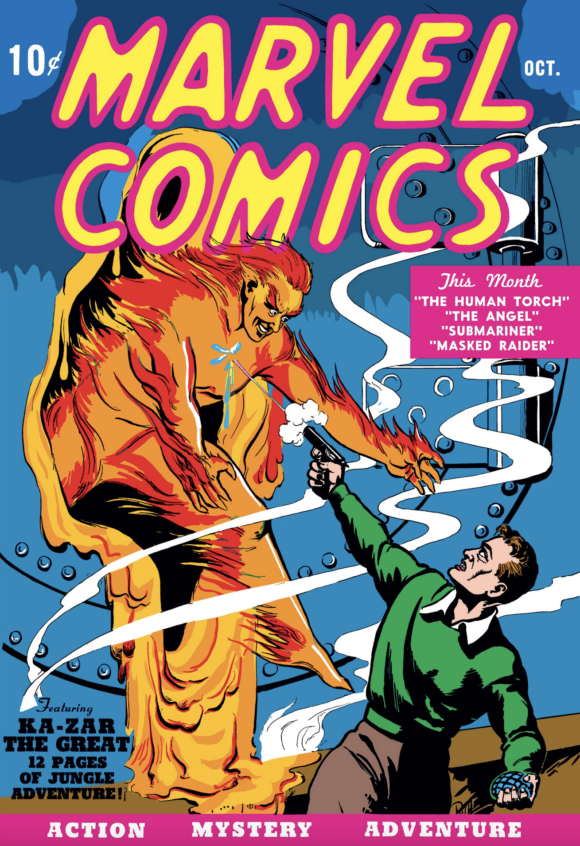
—
“Carl Burgos’ Hot Idea.” A text “interview” with Carl Burgos, writer/artist/creator of the Human Torch… mighty Marvel myth-building even before there was a mighty Marvel (or Stan Lee!) to mythologize.
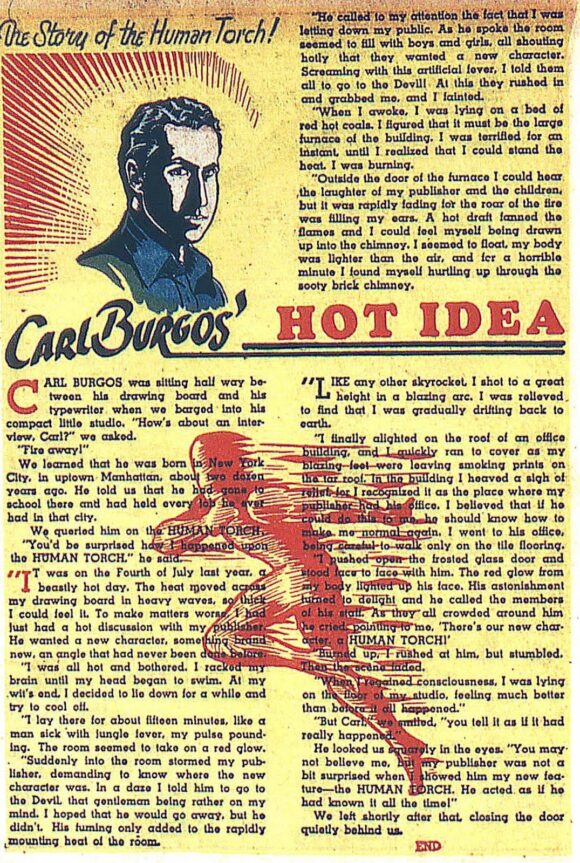
—
The Human Torch. The birth of a hot idea! The Torch would burn through the ’40s and ’50s before the name was given to a new incarnation of the character in 1961’s Fantastic Four #1.
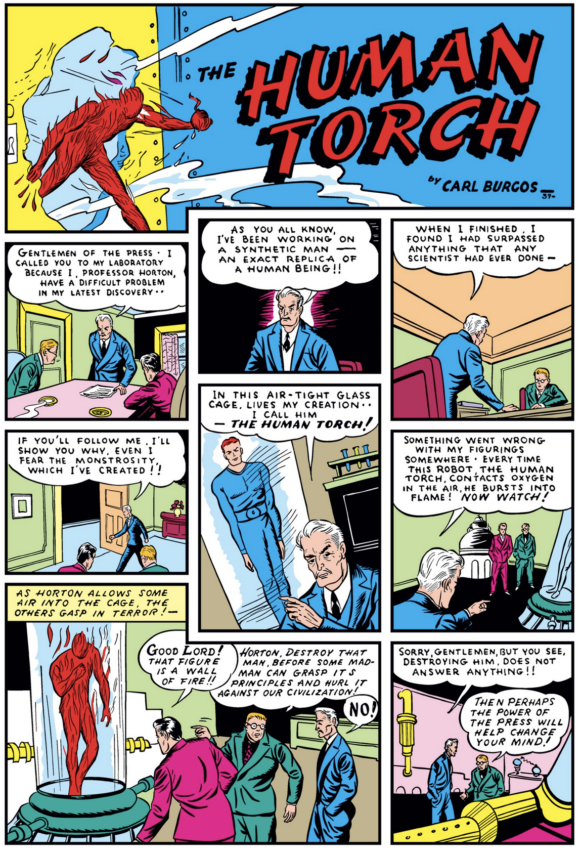
—
The Angel. Paul Gustavson’s non-powered costumed detective proved to be a Timely staple throughout much of the ’40s, appearing regularly in Marvel Tales and Sub-Mariner Comics, and popping up in the occasional other title.
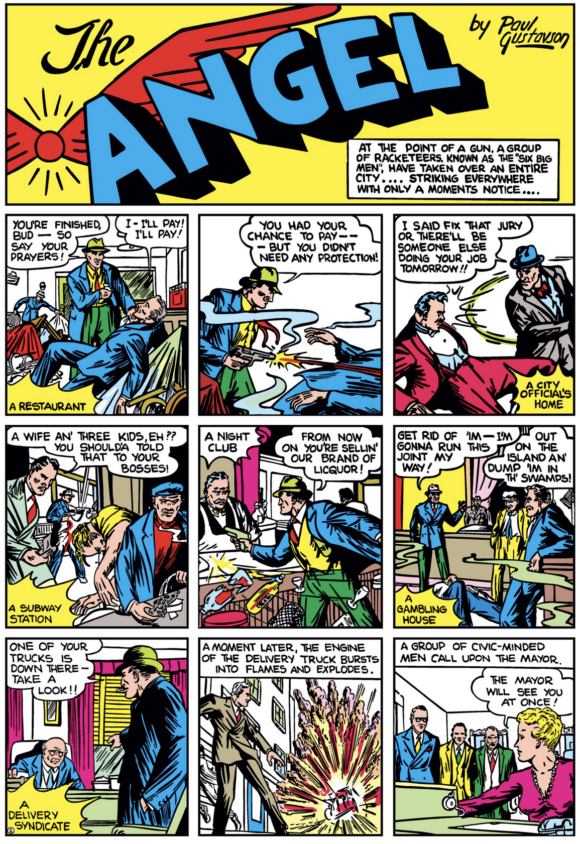
—
“Bill Everett’s Hurricane: The Story of the Sub-Mariner.” Wherein Sub-Mariner creator Bill Everett discusses his background and the genesis of the second iconic hero to debut, in this second proto “Bullpen Bulletin” text feature.
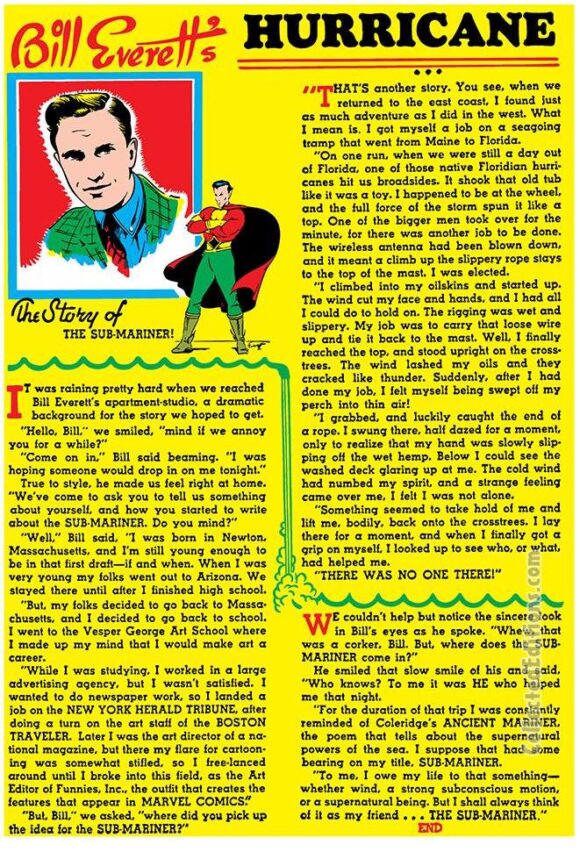
Scanned by collectededitions.com
—
The Sub-Mariner. Everett’s first Sub-Mariner tale is as beautifully rendered as it is significant!
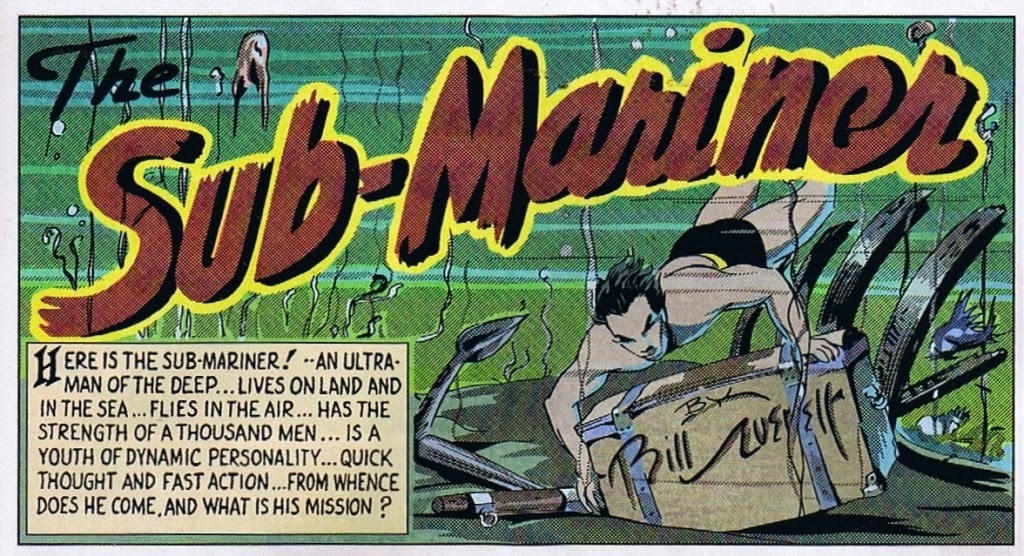
—
Bill Everett (1917–1973). Whenever we refused to try some disgusting Depression-era organ meat that he’d grown up on, my father would shake his head and scoff, “You kids today don’t know what’s good.” Not doing a deep dive into the art Bill Everett created over the course of his career is like not wanting to try those sweetbreads or cow brains! (I am the master of the simile!)
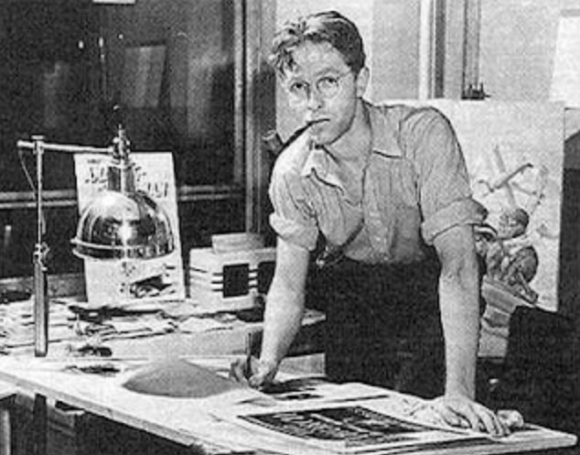
—
The Masked Rider. Al Anders’ Western strip isn’t without its Golden Age charm, but it would prove to be Marvel Comics #1’s weakest link, a masked hero who lasted 12 issues before riding off into the sunset.
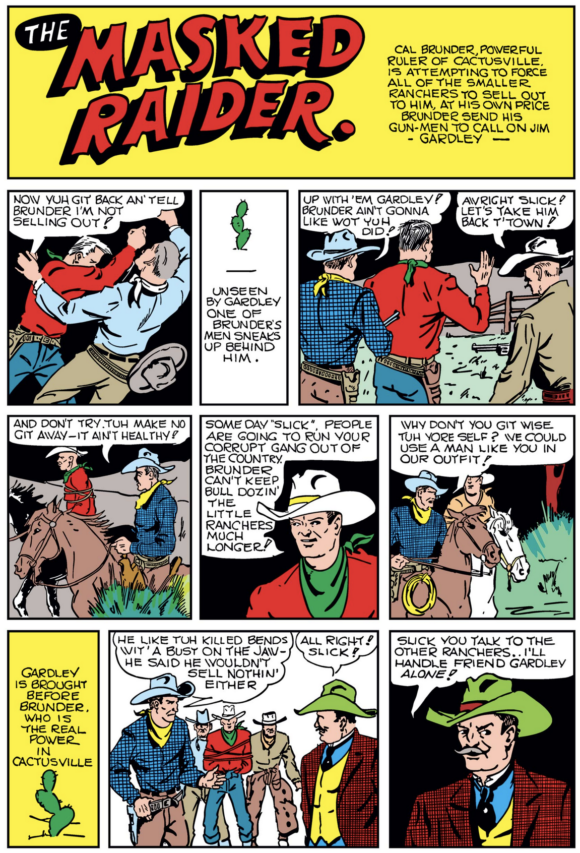
—
“Jungle Terror: A Complete Adventure Story.” A one-off tale with some of the better art in the issue, by Art Pinajian (signed as Tomm Dixon).
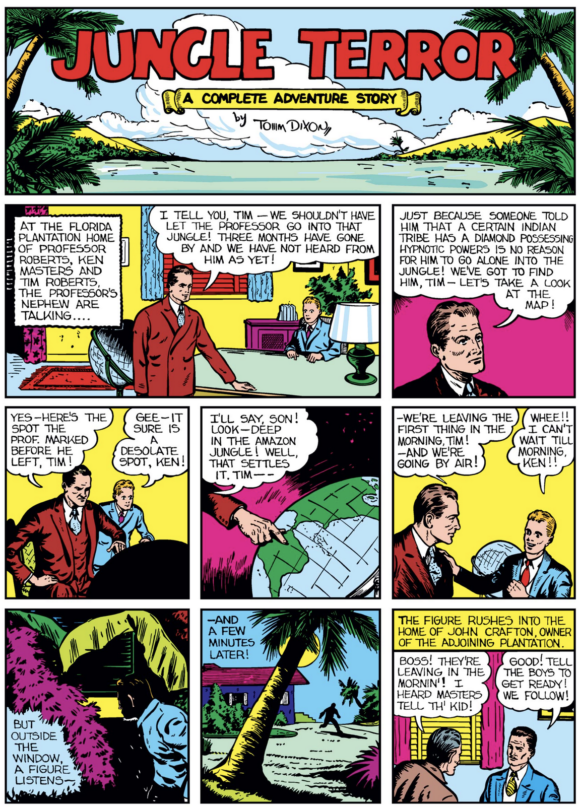
—
“Burning Rubber: A Short Story About the Auto Race Tracks.” Text pages used to be as common in comic books as “Cont. on 2nd Page Following” captions and not just because they were a cheap way to fill space but because they also qualified these “magazines” for cheaper third-class postage rates.
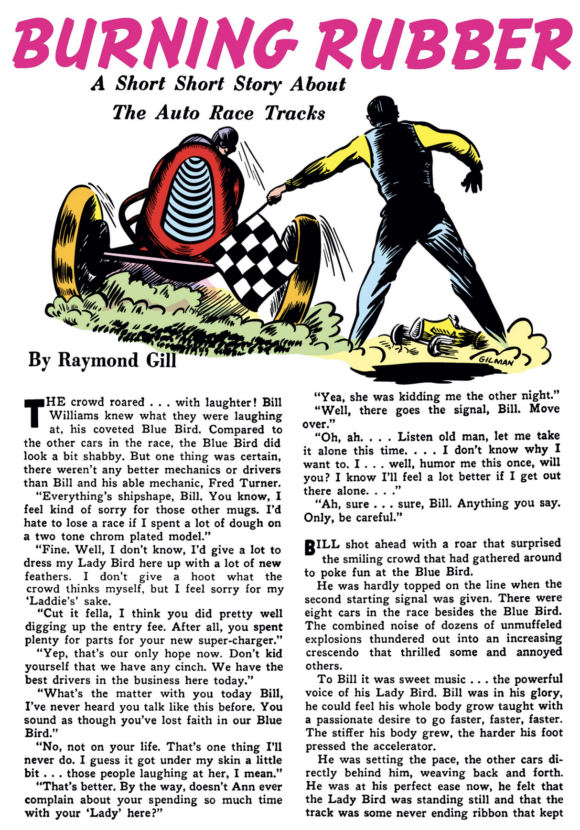
—
Adventures of Ka-Zar The Great. Referring to Ka-Zar as “the famous character created by Bob Byrd” in the splash panel was a bit of an exaggeration, seeing as how the jungle action hero’s pulp magazine had only lasted three issues in 1936-37. But he fared far better in comics than in pulps, appearing in Marvel Mystery Comics through #27 (pub date January 1942) and later being revived during the early Marvel Age in The X-Men #10 (March 1965).
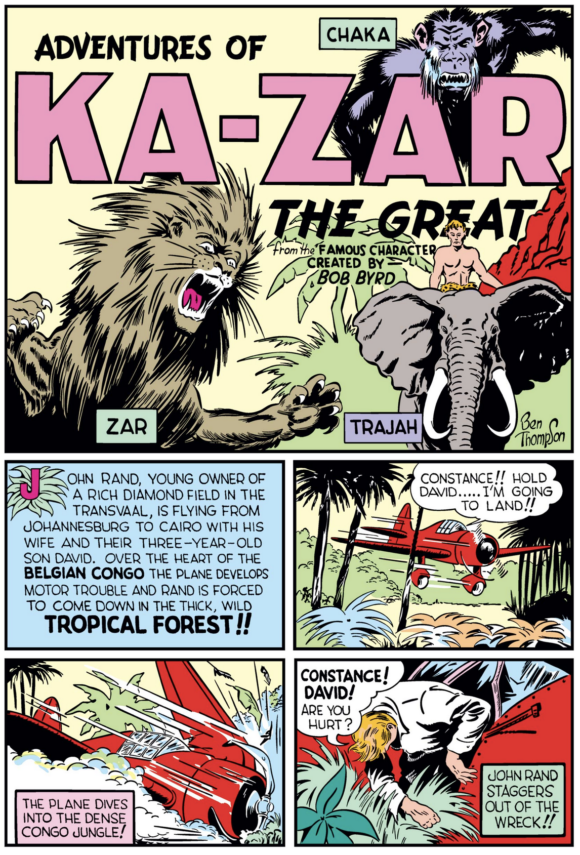
—
The 12-Panel Grid. For certain types of stories, I love me a good 9-panel grid, something right out of a job by Steve Ditko or Keith Giffen. There’s an urgency to the design that whips the reader along, keeping them focused on the details. It’s not for every story, of course, any more than you would think would be the 12-panel grid, followed by all but one story in the issue! Granted, Golden (and Silver) Age artists were working on art boards that were “double up,” i.e., 12.5” x 18.5” versus the 10” x 15” originals used since 1967, so they had a lot of real estate to cover. They were free to merge two or more panels horizontally or vertically, even four together to form a square to open things up, but every one of Marvel Comics #1’s artists adhered rigorously to the grid… except Bill Everett. Because Bill Everett don’t need your stinkin’ grid!
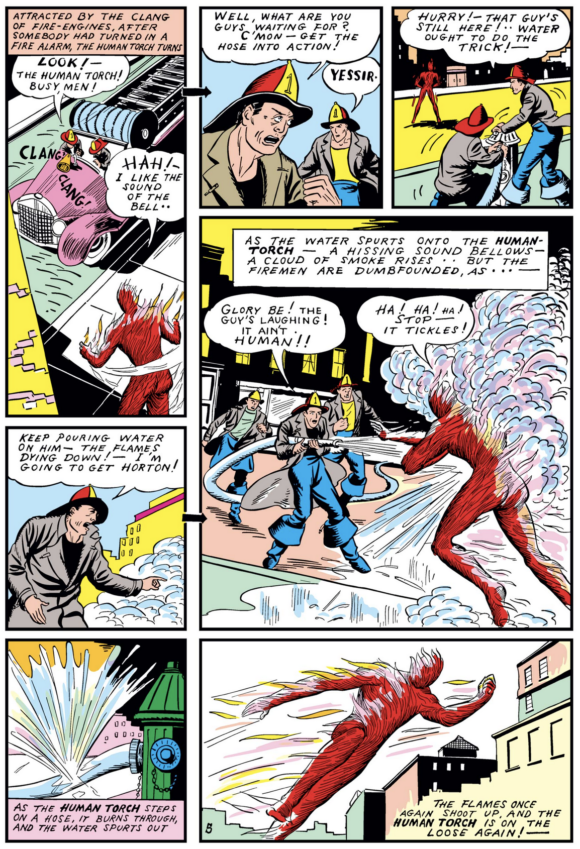
—
Martin Goodman (1908–1992). Look, most of the early figures responsible for building the comic-book business had a bit of the gonif in them. Publishing pulps and adventure magazines and comic books was a penny ante business and every corner needed to be cut and every advantage taken to make as many pennies as it took to add up to real money. But whatever his faults and virtues, with Martin Goodman there would have been no Marvel Comics #1 nor the subsequent 20-plus years of Timely/Atlas and thus, no Marvel Comics and no Devil Dinosaur in 1978! And, you know, the rest of the stuff they published…
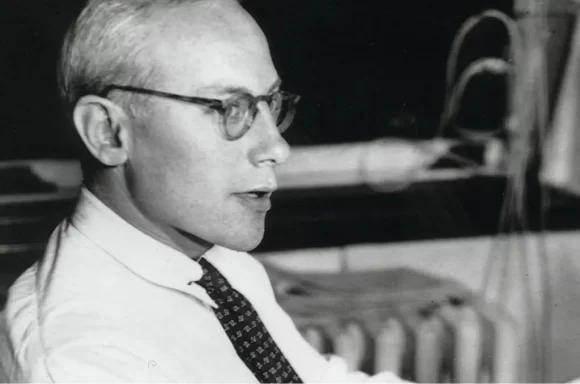
—
MORE
— PAUL KUPPERBERG: A Comic Moment With… STAN LEE. Click here.
— PAUL KUPPERBERG: My 13 Favorite Bronze Age MARVEL Monsters. Click here.
—
PAUL KUPPERBERG was a Silver Age fan who grew up to become a Bronze Age comic book creator, writer of Superman, the Doom Patrol, and Green Lantern, creator of Arion Lord of Atlantis, Checkmate, and Takion, and slayer of Aquababy, Archie, and Vigilante. He is the Harvey and Eisner Award nominated writer of Archie Comics’ Life with Archie, and his YA novel Kevin was nominated for a GLAAD media award and won a Scribe Award from the IAMTW. Now, as a Post-Modern Age gray eminence, Paul spends a lot of time looking back in his columns for 13th Dimension and in books such as Direct Conversations: Talks with Fellow DC Comics Bronze Age Creators and Direct Comments: Comic Book Creators in Their own Words, available, along with a whole bunch of other books he’s written, by clicking the links below.
Website: https://www.paulkupperberg.net/
Shop: https://www.paulkupperberg.net/shop-1
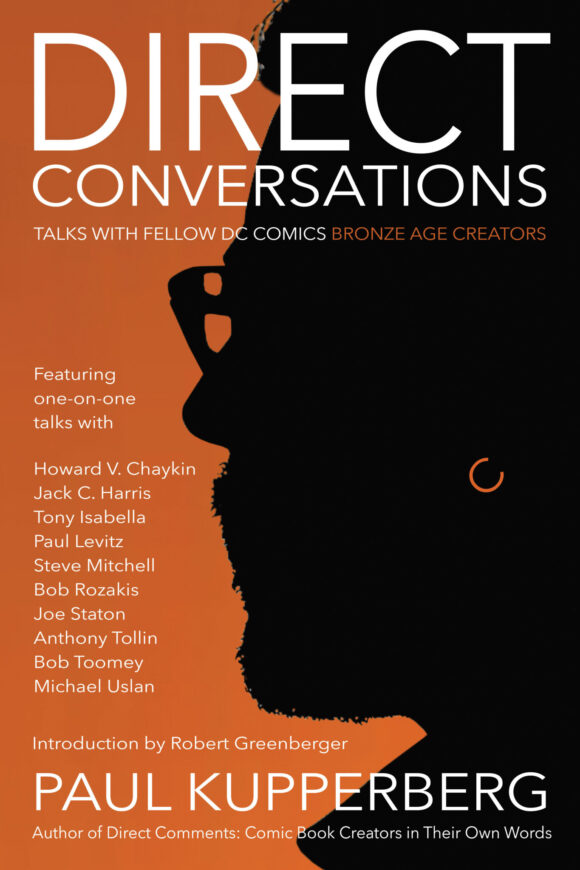

August 31, 2023
Looks like Submariner stole Green Lantern’s costume on that one text page!
I remember a Marvel reprint in The Invaders title, a tale showing a team-up between Submariner and Human Torch, I really enjoyed it.